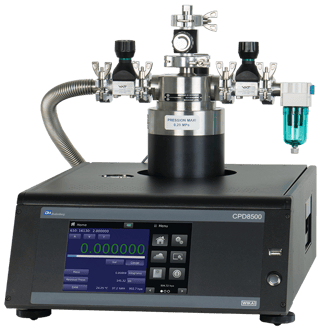Deadweight testers, or pressure balances, have been around a long time and are the first instruments that come to mind when thinking of primary pressure standards. For years, deadweight testers have been considered the go-to calibration reference standard for verifying the accuracy of pressure measuring instruments and pressure calibrators. The high faith in these instruments is due to their SI unit-based measuring principle and the notion that lack of electrical components enhances their measurement accuracy. However, this very aspect of the pressure balance makes it a cumbersome tool to use, with heavy external mass loading and separate environmental calculations.
This is especially true for absolute or vacuum pressure calibrations. In a traditional deadweight tester, vacuum mode is achieved by evacuating the chamber housing the external masses. This requires reloading masses and re-establishing necessary vacuum for every measurement point.A deadweight tester with automatic mass loading was the first step toward a solution to these problems. The instrument usually comprises of a loading mechanism operating in tandem with an external or internal controller to determine the optimal mass load for each measuring point. The mass is then automatically loaded onto the piston cylinder assembly to calculate pressure. These systems usually have a bigger footprint than traditional balances and still do not internalize the separate environmental calculations required to correct the calculated pressure.

The optimal solution to all of these problems would be a digital deadweight tester that moves away from external mass loading on the piston cylinder assembly, reduces the overall footprint and internally compensates the calculated pressure for all environmental and local factors, while still maintaining the primary accuracy standards set by pressure balances.
The CPD8500 Digital Deadweight Tester does just that!
It combines the fundamental SI unit-based measuring principle of a pressure balance and allows this force to be acted on by an internal load cell for pressure generation. It also measures environmental components like ambient pressure, humidity and temperature, along with factors like local gravity and source vacuum, to calculate the pressure value without the hassle of any external equipment.
With advancements in technology, deadweight testers can now be digitized and reduce the resources and time required to do a primary pressure calibration.
Related Reading:


